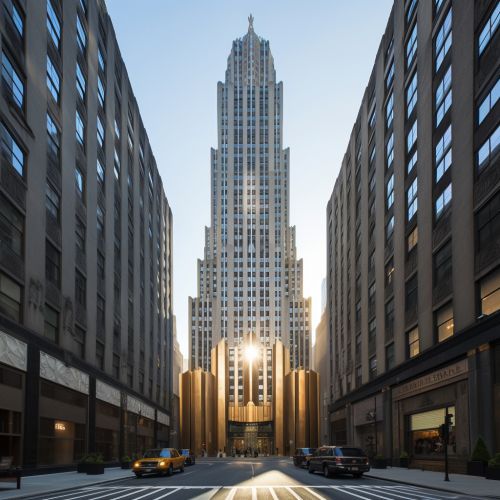Empire State Building
Architecture
The Empire State Building is a striking example of Art Deco architecture, a style that was popular during the late 1920s and early 1930s. The building's design is characterized by its symmetrical, geometric forms, and use of stepped back, set-back style to comply with the 1916 Zoning Resolution in New York City. This resolution was intended to prevent new skyscrapers from obstructing too much light on the city's streets.


The Empire State Building stands at a total height of 1,454 feet (443.2 meters), including its antenna. The roof height is 1,250 feet (381 meters), making it the fifth-tallest completed skyscraper in the United States, and the 28th-tallest in the world. It also has a total of 102 floors, with the 86th floor housing an open-air observation deck, and the 102nd floor having an enclosed observatory.
Construction
The construction of the Empire State Building was a monumental task that involved numerous workers and a significant amount of resources. The project was initiated by a consortium of influential businessmen, including former New York Governor Al Smith and financier John J. Raskob, who were eager to create a building that would surpass the height of the Chrysler Building, which was under construction at the same time.
The construction process was remarkably fast, with the building's steel framework rising at a rate of four and a half stories per week. This was possible due to the use of prefabricated steel parts, which were manufactured off-site and then transported to the construction site for assembly. The building was officially opened on May 1, 1931, just 13 months after the start of construction.
Impact and Legacy
The Empire State Building has had a significant impact on popular culture and has been featured in numerous films, television shows, and other media. It is often used as a symbol of New York City and has become one of the city's most popular tourist attractions. The building's observation decks offer panoramic views of the city and are visited by millions of people each year.
The Empire State Building has also played a significant role in the field of broadcasting. Its antenna has been used for broadcasting signals for various radio and television stations since the 1930s. In addition, the building's height and prominent location have made it a valuable site for the collection of scientific data, including studies on air quality and wind patterns.
